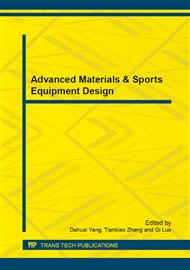p.54
p.61
p.64
p.69
p.74
p.82
p.88
p.92
p.97
Analytical Test Methods Used to Characterize Granular Composite Sport Surface Materials
Abstract:
Thoroughbred horse racetracks consisting of granular composite materials, also referred to as synthetic tracks, were developed for the racing industry with the goal of increasing safety to horses and jockeys and reducing maintenance efforts. These granular composites consist of sand, polymer fiber, and rubber bound together with a high-oil wax binder. The mechanical properties of these surfaces are significantly influenced by material composition, environmental factors, and surface maintenance procedures, and are susceptible to both environmental and mechanical-induced degradation over time. Using a combination of material analytical tests, surface mechanical and chemical properties and changes to them are assessed. Tests used to characterize the surface materials composition include Soxhlet wax extraction, wax oil extraction and sand morphology. Additionally, water-holding capacity, wax differential scanning calorimetry (DSC), gas chromatography (GC), Fourier transform infrared spectroscopy (FTIR), and x-ray fluorescence (XRF) provide insight to the thermal mechanical response of these surfaces as temperature and track composition/conditions change. Pertinent test results for two U.S. synthetic racetracks are included in this work to demonstrate the practicality of using this suite of testing. These tests and results provide a basis for racetrack maintenance decisions with the goal of achieving a more consistent racing surface that should ultimately reduce equine, and by extension jockey, injuries.
Info:
Periodical:
Pages:
74-81
Citation:
Online since:
October 2013
Authors:
Price:
Сopyright:
© 2014 Trans Tech Publications Ltd. All Rights Reserved
Share:
Citation:


